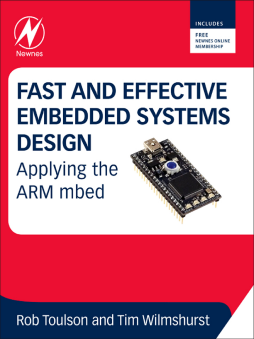
Additional Information
Book Details
Abstract
Fast and Effective Embedded Systems Design is a fast-moving introduction to embedded system design, applying the innovative ARM mbed and its web-based development environment. Each chapter introduces a major topic in embedded systems, and proceeds as a series of practical experiments, adopting a "learning through doing" strategy. Minimal background knowledge is needed. C/C++ programming is applied, with a step-by-step approach which allows the novice to get coding quickly. Once the basics are covered, the book progresses to some "hot" embedded issues – intelligent instrumentation, networked systems, closed loop control, and digital signal processing.
Written by two experts in the field, this book reflects on the experimental results, develops and matches theory to practice, evaluates the strengths and weaknesses of the technology or technique introduced, and considers applications and the wider context. Numerous exercises and end of chapter questions are included.
- A hands-on introduction to the field of embedded systems, with a focus on fast prototyping
- Key embedded system concepts covered through simple and effective experimentation
- Amazing breadth of coverage, from simple digital i/o, to advanced networking and control
- Applies the most accessible tools available in the embedded world
- Supported by mbed and book web sites, containing FAQs and all code examples
- Deep insights into ARM technology, and aspects of microcontroller architecture
- Instructor support available, including power point slides, and solutions to questions and exercises
"The authors address a wide range of topics, including digital and analog input and output, interrupts, LCDs, and digital signal processing. The book provides deep insights into computer architecture, memory management, and input/output processes…Overall, this is a great book for computer hobbyists, embedded systems engineers, and students." --ComputingReviews.com, October 2013
"Toulson…and Wilmshurst…explain how to program circuits on ARM's mbed microprocessor-based hardware platform and provide instructions for building a digital-to-analog converter, serial data links, and a liquid crystal display." --Reference and Research Book News, February 2013
